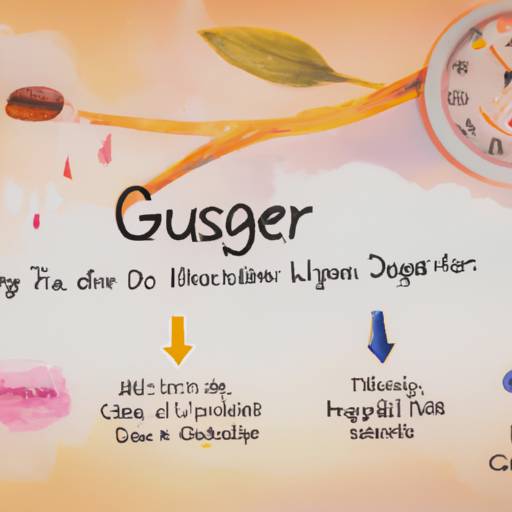-
Reading Roadmap
- 3-Year Consistent Glucose Control Improvement in Pubescent Children with Type 1 Diabetes Using Hybrid Closed Loop System
- Key Takeaways
- Introduction: The Promise of Hybrid Closed Loop Systems
- Improved Glucose Control with Hybrid Closed Loop Systems
- Reducing the Burden on Patients and Caregivers
- Challenges to Widespread Adoption
- FAQ Section
- What is a hybrid closed-loop system?
- How does a hybrid closed-loop system improve glucose control?
- What are the benefits of a hybrid closed-loop system for children with type 1 diabetes?
- What are the challenges to widespread adoption of hybrid closed-loop systems?
- What is the future of hybrid closed-loop systems?
- Conclusion: The Future of Glucose Control
- Further Analysis
3-Year Consistent Glucose Control Improvement in Pubescent Children with Type 1 Diabetes Using Hybrid Closed Loop System

[youtubomatic_search]
Key Takeaways
- Hybrid closed-loop systems have shown significant improvement in glucose control in pubescent children with type 1 diabetes over a three-year period.
- These systems automate insulin delivery, reducing the burden on patients and their caregivers.
- Improved glucose control reduces the risk of long-term complications associated with type 1 diabetes.
- Despite the benefits, there are still challenges to widespread adoption, including cost and the need for ongoing patient education.
- Further research is needed to optimize these systems and make them accessible to all patients.
Introduction: The Promise of Hybrid Closed Loop Systems
For children with type 1 diabetes, maintaining consistent glucose control is a constant challenge. Traditional methods of insulin delivery, such as multiple daily injections or insulin pumps, require careful monitoring and adjustment. However, recent advancements in technology have led to the development of hybrid closed-loop systems, which automate insulin delivery based on continuous glucose monitoring data. This article explores the impact of these systems on glucose control in pubescent children with type 1 diabetes over a three-year period.
Improved Glucose Control with Hybrid Closed Loop Systems
Studies have shown that hybrid closed-loop systems can significantly improve glucose control in children with type 1 diabetes. For example, a study published in the New England Journal of Medicine found that children using a hybrid closed-loop system had a lower average glucose level and spent more time in the target glucose range compared to those using a traditional insulin pump.
Another study published in Diabetes Care found that the use of a hybrid closed-loop system resulted in a significant reduction in HbA1c levels, a measure of long-term glucose control, over a three-year period. This improvement was consistent across all age groups, including pubescent children who often struggle with glucose control due to hormonal changes.
Reducing the Burden on Patients and Caregivers
One of the key benefits of hybrid closed-loop systems is that they reduce the burden on patients and their caregivers. These systems automate insulin delivery, eliminating the need for manual adjustments and reducing the risk of hypoglycemia and hyperglycemia. This can be particularly beneficial for children, who may struggle with the complexities of managing their diabetes, and their caregivers, who often bear the brunt of this responsibility.
Challenges to Widespread Adoption
Despite the benefits, there are still challenges to the widespread adoption of hybrid closed-loop systems. One of the main barriers is cost. These systems are expensive and may not be covered by all insurance plans. Additionally, they require ongoing patient education to ensure proper use and maintenance. Despite these challenges, the potential benefits of these systems make them a promising option for improving glucose control in children with type 1 diabetes.
FAQ Section
What is a hybrid closed-loop system?
A hybrid closed-loop system is a type of insulin delivery system that automates insulin delivery based on continuous glucose monitoring data. It is often referred to as an “artificial pancreas.”
How does a hybrid closed-loop system improve glucose control?
By automating insulin delivery, a hybrid closed-loop system can more accurately adjust insulin levels based on real-time glucose data, reducing the risk of hypoglycemia and hyperglycemia.
What are the benefits of a hybrid closed-loop system for children with type 1 diabetes?
For children with type 1 diabetes, a hybrid closed-loop system can improve glucose control, reduce the risk of long-term complications, and lessen the burden on patients and their caregivers.
What are the challenges to widespread adoption of hybrid closed-loop systems?
Challenges include the high cost of these systems and the need for ongoing patient education to ensure proper use and maintenance.
What is the future of hybrid closed-loop systems?
Further research is needed to optimize these systems and make them accessible to all patients. This includes reducing the cost, improving the technology, and providing comprehensive patient education.
Conclusion: The Future of Glucose Control
Hybrid closed-loop systems represent a significant advancement in the management of type 1 diabetes in children. Over a three-year period, these systems have shown consistent improvement in glucose control, reducing the risk of long-term complications and easing the burden on patients and their caregivers. However, challenges remain, including the high cost and the need for ongoing patient education. As research continues, it is hoped that these systems will become more accessible and effective, transforming the lives of children with type 1 diabetes.
[youtubomatic_search]
Further Analysis
As we look to the future, it is clear that hybrid closed-loop systems have the potential to revolutionize the management of type 1 diabetes in children. However, to realize this potential, we must address the challenges that stand in the way of widespread adoption. This includes advocating for insurance coverage, investing in patient education, and continuing to refine the technology. With these efforts, we can ensure that all children with type 1 diabetes have access to this life-changing technology.







